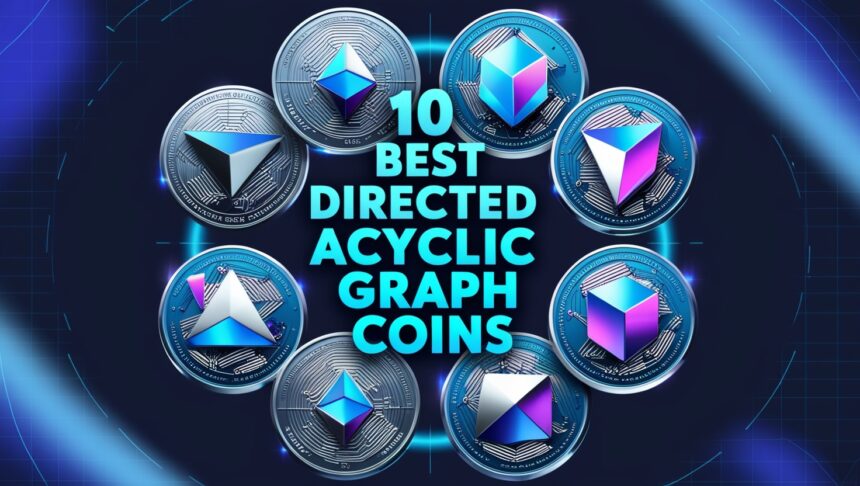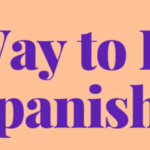In this article , I will cover the Best Directed Acyclic Graph Coins, a new breed of cryptocurrency technology that seeks to solve problems with existing blockchain systems.
These coins provide superior scalability and lower fees, which makes them more efficient for decentralized applications. Now, let’s take a closer look at some of the most innovative DAG coins.
Key Point & Best Directed Acyclic Graph Coins List
| Cryptocurrency | Key Point |
|---|---|
| Hedera | High throughput, low latency with Hashgraph consensus. |
| Kaspa | High scalability and fast finality with GHOSTDAG. |
| IOTA | Fee-less transactions, IoT-focused with Tangle. |
| Constellation | Scalable, decentralized with Hypergraph technology. |
| Nano | Instant transactions and low energy consumption. |
| Taraxa | High scalability and low cost with BlockDAG. |
| Xelis | Scalable, energy-efficient decentralized data processing. |
| Obyte | Decentralized, private transactions with Byteball. |
| Vite | High throughput and cross-chain compatibility. |
| BlockDAG | High scalability and low transaction fees with BlockDAG technology. |
1.Hedera (HBAR)
Hedera (HBAR) sets itself apart from the best Directed Acyclic Graph (DAG) coins like HBAR due to the innovative Hasgraph consensus algorithm. Unlike blockchains, Hashgraph accomplishes high-speed, low-latency transactions with unparalleled security through asynchronous Byzantine Fault Tolerance (aBFT).
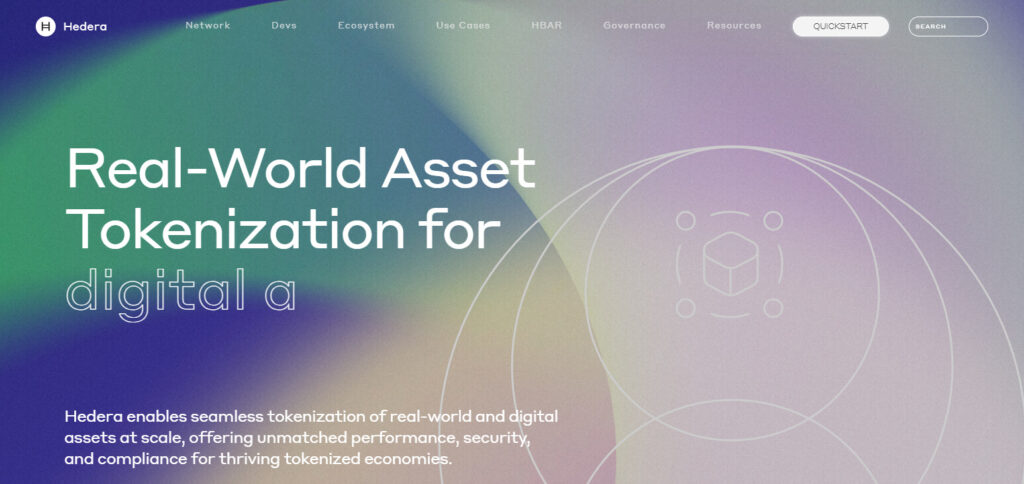
It’s futuristic scalability and efficiency makes Hedera ideal for enterprise level applications. HBAR distinguishes itself from others in the DAG space with its unique governance model which decentralizes control while maintaining stability, strengthen in the form of a council composed of global governmnet bodies. DeFi. and multi-complex enterprise applications.
| Feature | Details |
|---|---|
| Technology | Hashgraph (DAG-based consensus mechanism) |
| Transaction Speed | Over 10,000 transactions per second (TPS) |
| Transaction Fees | Predictably low fees (average $0.001 per transaction) |
| Energy Efficiency | Carbon-negative; consumes minimal energy per transaction |
| KYC Requirements | Minimal KYC required for wallet setup and transactions |
| Use Cases | Smart contracts, tokenization, file storage, and decentralized applications |
| Governance | Decentralized governance by Hedera Governing Council, including global enterprises |
| Security | Asynchronous Byzantine Fault Tolerance (ABFT) for high-grade security |
| Staking Support | HBAR staking available to secure the network and earn rewards |
2.Kaspa (KAS)
Kaspa (KAS) is regarded as one of the top Directed Acyclic Graph (DAG) coins because of its innovative implementation of GHOSTDAG protocol.
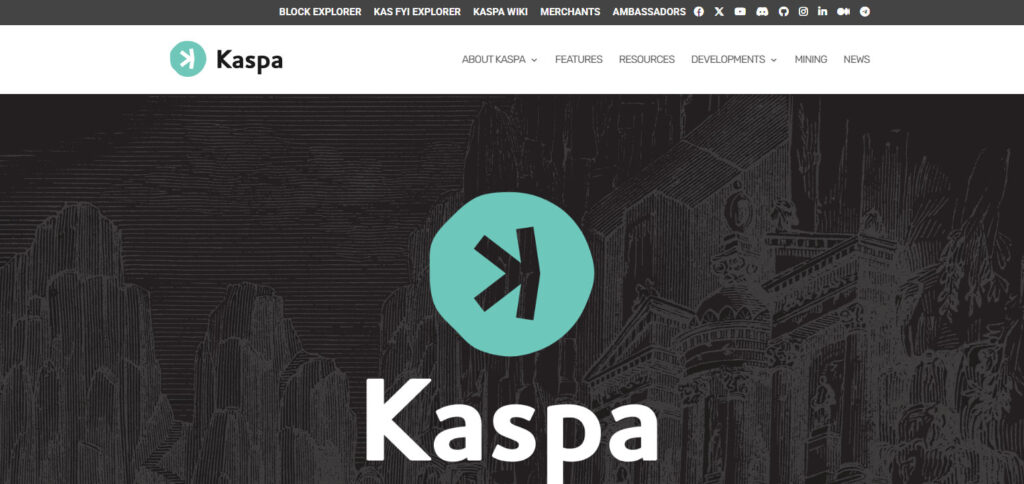
This permits high scalability and instant completion of transactions which is a major problem of blockchain systems. Kaspa processes thousands of transactions per second without ever compromising decentralization or security, which makes it ideal for mainstream adoption.
Its distinct blockDAG architecture allows for parallel processing that guarantees speed, efficiency, and leadership in the DAG ecosystem.
| Feature | Details |
|---|---|
| Technology | GHOSTDAG protocol (DAG-based consensus mechanism) |
| Transaction Speed | High throughput with 1 block per second; aiming for 10+ blocks per second |
| Transaction Fees | Extremely low fees (average $0.0001 per transaction) |
| Energy Efficiency | Proof-of-Work (PoW) with optimized energy consumption |
| KYC Requirements | Minimal KYC required for wallet setup and transactions |
| Use Cases | Payments, tokenization, and decentralized applications |
| Governance | Community-driven, open-source project |
| Security | Asynchronous Byzantine Fault Tolerance (ABFT) for robust security |
| Scalability | Supports high block rates and parallel block processing |
3.IOTA (MIOTA)
IOTA (MIOTA) is a leading Directed Acyclic Graph (DAG) coin, known for its Tangle technology which removes transaction fees, allowing feeless, scalable transactions.
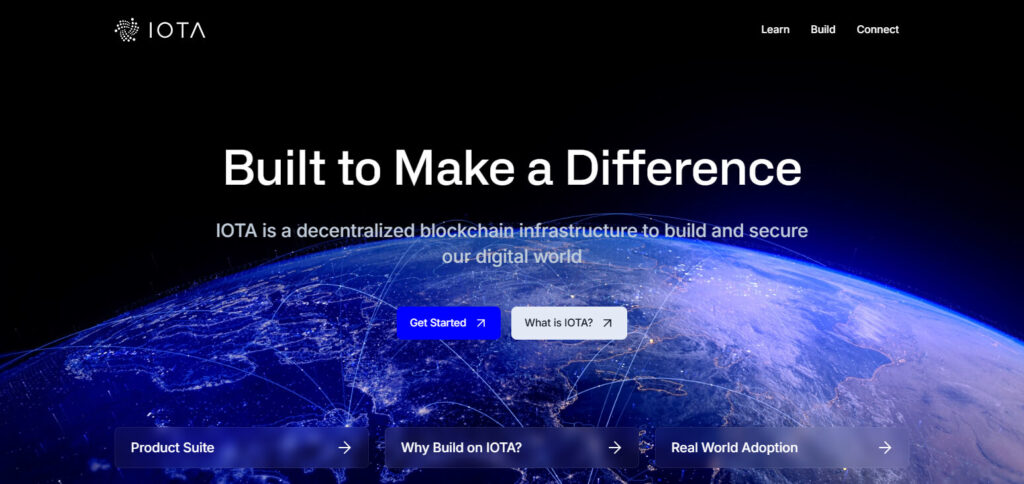
Unlike traditional blockchains, IOTA’s Tangle network enables transfers to occur in real-time and efficiently without the need for miners.
This feature makes IOTA particularly advantageous for Internet of Things (IoT) technology, which relies heavily on microtransactions. IOTA’s distinct methods for scalability and operating without fees makes IOTA a leader in the DAG space and advances innovation in decentralized IoT ecosystems.
| Feature | Details |
|---|---|
| Technology | Tangle (DAG-based distributed ledger technology) |
| Transaction Speed | High scalability with parallel transaction processing |
| Transaction Fees | Zero transaction fees |
| Energy Efficiency | Extremely energy-efficient due to lightweight consensus mechanism |
| KYC Requirements | Minimal KYC required for wallet setup and transactions |
| Use Cases | Internet of Things (IoT), data integrity, and micropayments |
| Governance | Open-source and community-driven |
| Security | Quantum-resistant cryptography for enhanced security |
| Scalability | Unlimited scalability with increased network activity |
4.Constellation (DAG)
Constellation (DAG) is remarkable in the Directed Acyclic Graph (DAG) field as it implements innovative Hypergraph technology, which balances scalability and security.
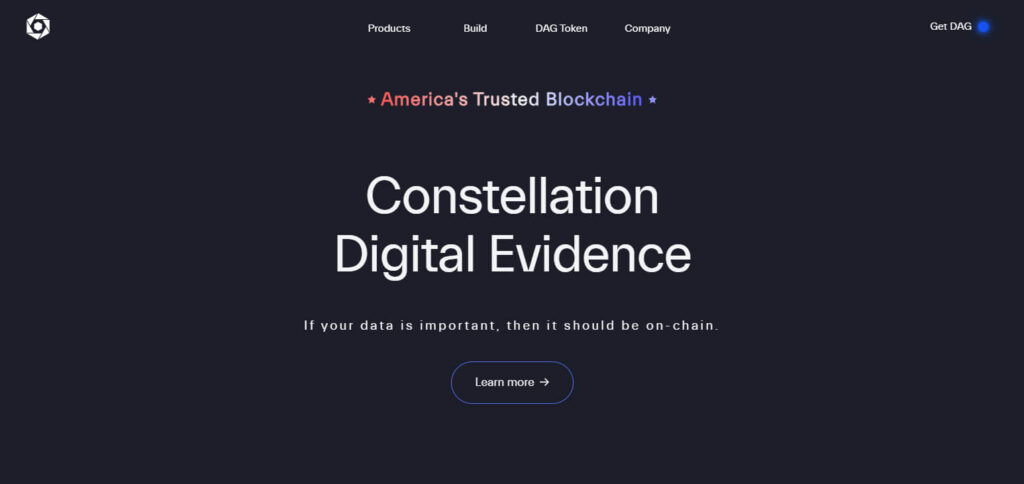
With Hypergraph, Constellation processes data at remarkable speeds because, unlike traditional blockchains, it enables decentralized agreement within a network.
This technology is well-suited for big data work, enterprise applications, and secure data handling. Constellation’s position as a leader in the DAG ecosystem is secured due to its unparalleled capacity to manage a multitude of real-time transactions under a fully decentralized network.
| Feature | Details |
|---|---|
| Technology | GHOSTDAG protocol (DAG-based consensus mechanism) |
| Transaction Speed | High throughput with parallel block processing |
| Transaction Fees | Near-zero transaction fees |
| Energy Efficiency | Highly energy-efficient due to lightweight consensus |
| KYC Requirements | Minimal KYC required for wallet setup and transactions |
| Use Cases | Secure data transfer, tokenization, and decentralized applications |
| Governance | Community-driven, open-source project |
| Security | Asynchronous Byzantine Fault Tolerance (ABFT) for robust security |
| Staking Support | Delegated staking available for earning rewards |
5.Nano (XNO)
Nano (XNO) is among the pioneering Directed Acyclic Graph (DAG) coins, and is known for its pioneering block-lattice structure which gives each account their own blockchain.

Its design allows for rapid, zero-cost, and low energy consumption transactions which makes Nano ideal for day-to-day micro transactions. The light structure of the network removes the necessity for mining and further increases the environmental friendliness of Nano while sustaining high scalability.
The combination of fast and low cost transactions with environmental impact makes Nano one of the leading and most efficient user-friendly DAG-based cryptocurrencies.
| Feature | Details |
|---|---|
| Technology | Block-lattice structure (DAG-based ledger technology) |
| Transaction Speed | Instant transactions with high scalability |
| Transaction Fees | Zero transaction fees |
| Energy Efficiency | Extremely energy-efficient due to lightweight protocol |
| KYC Requirements | Minimal KYC required for wallet setup and transactions |
| Use Cases | Micropayments, peer-to-peer transactions, and decentralized applications |
| Governance | Open-source and community-driven |
| Security | Uses Open Representative Voting (ORV) for secure consensus |
| Scalability | Unlimited scalability with increased network activity |
6.Taraxa (TARA)
Taraxa (TARA) is one of the most distinguished Directed Acyclic Graph (DAG) coins because of its attention toward scalable and cost-effective solutions for real world business problems.
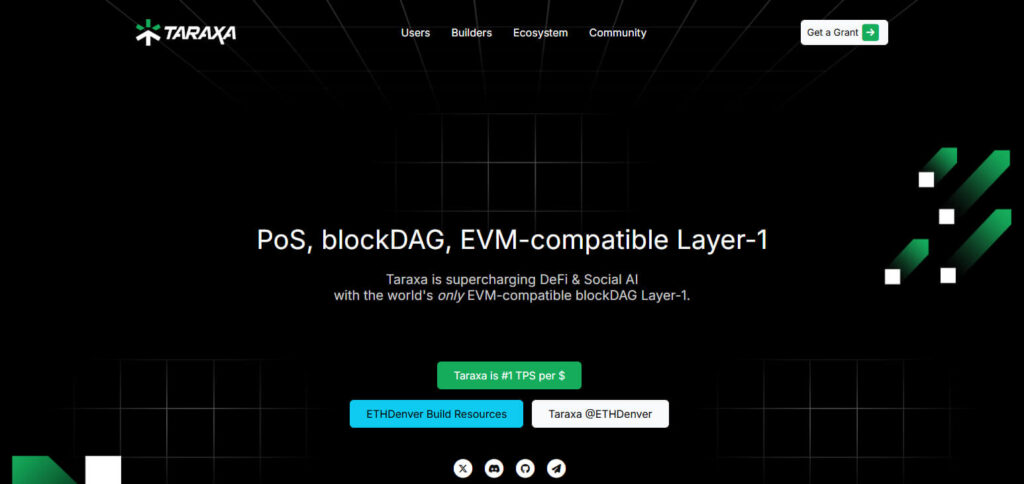
Taraxa makes sure fast, secure, and ultra-efficient transactions through its unique DAG-based consensus mechanism which is ideal for supply chain management and data provenance.
It differentiates itself from others by being able to support high transaction throughput without any tradeoffs on decentralization and security, thus positioning Taraxa as a potent solution for enterprise-grade decentralized applications.
| Feature | Details |
|---|---|
| Technology | BlockDAG architecture with t-Graph consensus mechanism |
| Transaction Speed | Over 5,000 transactions per second (TPS) |
| Transaction Fees | Predictably low fees |
| Energy Efficiency | Highly energy-efficient due to lightweight consensus |
| KYC Requirements | Minimal KYC required for wallet setup and transactions |
| Use Cases | Auditing informal transactions, tokenization, and decentralized applications |
| Governance | Decentralized governance by Taraxa community |
| Security | Robust security with asynchronous Byzantine Fault Tolerance (ABFT) |
| Staking Support | Staking available for securing the network and earning rewards |
7.Xelis (XEL)
Xelis(XEL) stands out in the Directed Acyclic Graph(DAG) space due to its emphasis on scalability and energy efficiency.
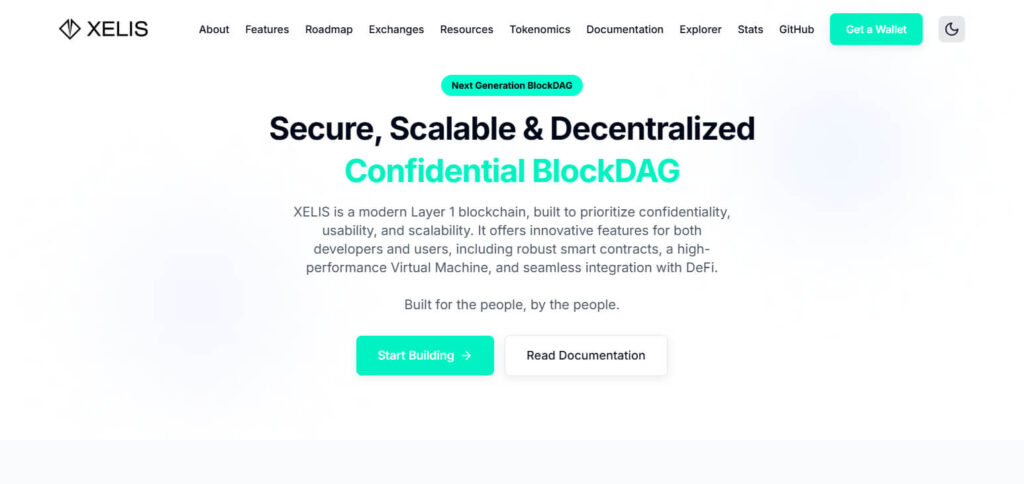
Built on a DAG architecture, Xelis supports high transaction throughput with low energy consumption, making it suitable for decentralized applications that require speed and low cost.
Its distinct consensus mechanism guarantees secure and smooth processing of data, making it a frontrunner for developers aiming to build scalable, sustainable, and efficient blockchains in finance, supply chain and other sector.
| Feature | Details |
|---|---|
| Technology | DAG-based architecture for scalability and efficiency |
| Transaction Speed | High throughput with near-instant transactions |
| Transaction Fees | Low transaction fees |
| Energy Efficiency | Optimized for energy-efficient operations |
| KYC Requirements | Minimal KYC required for wallet setup and transactions |
| Use Cases | Payments, decentralized applications, and tokenization |
| Governance | Community-driven, open-source project |
| Security | Robust security with advanced consensus mechanisms |
| Scalability | Supports high transaction volumes with parallel processing |
8.Obyte (GBYTE)
Obyte (GBYTE) stands out as one of the best Directed Acyclic Graph (DAG) coins because of its unique Byteball architecture which merges the advantages of DAG with secure and private transactions.
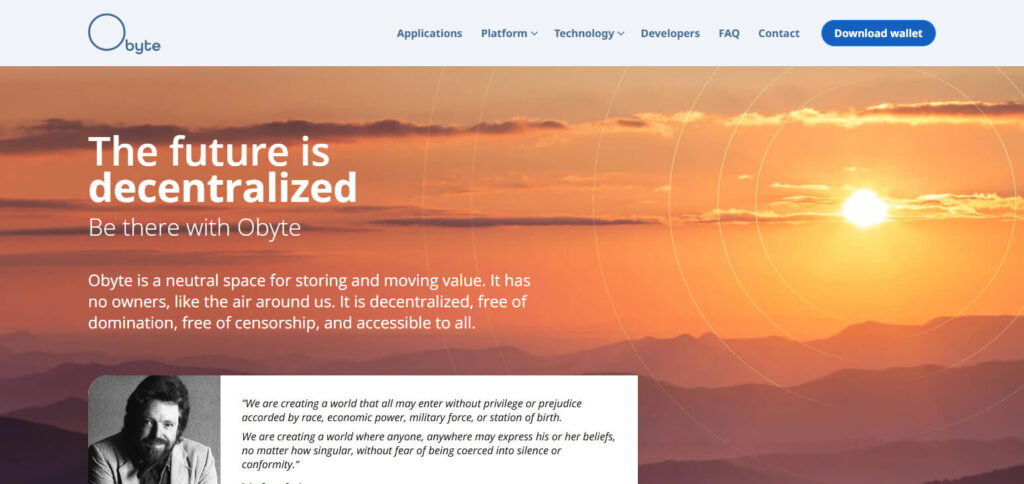
Its consensus mechanism guarantees scalability along with decentralization and security. Obyte’s smart contracts and data integrity solutions enable it to serve privacy-oriented applications.
The absence of miners on the network decreases energy usage whilst its simple interface allows for inexpensive, speedy transactions. These factors make Obyte a top contender in the DAG ecosystem.
| Feature | Details |
|---|---|
| Technology | DAG-based ledger technology |
| Transaction Speed | High scalability with parallel transaction processing |
| Transaction Fees | Zero transaction fees |
| Energy Efficiency | Extremely energy-efficient due to lightweight consensus mechanism |
| KYC Requirements | Minimal KYC required for wallet setup and transactions |
| Use Cases | Decentralized applications (dApps), tokenization, and secure data transfer |
| Governance | Decentralized governance by the Obyte community |
| Security | Robust security with advanced consensus mechanisms |
| Scalability | Unlimited scalability with increased network activity |
9.Vite (VITE)
Vite (VITE) is one of the most well-known Directed Acyclic Graph (DAG) coins, owing to its cross-chain interoperability and high throughput. Vite’s combination of DAG and Delegated Proof-of-Stake (DPoS) guarantees decentralized and secure transactions that are instantaneous and feeless.
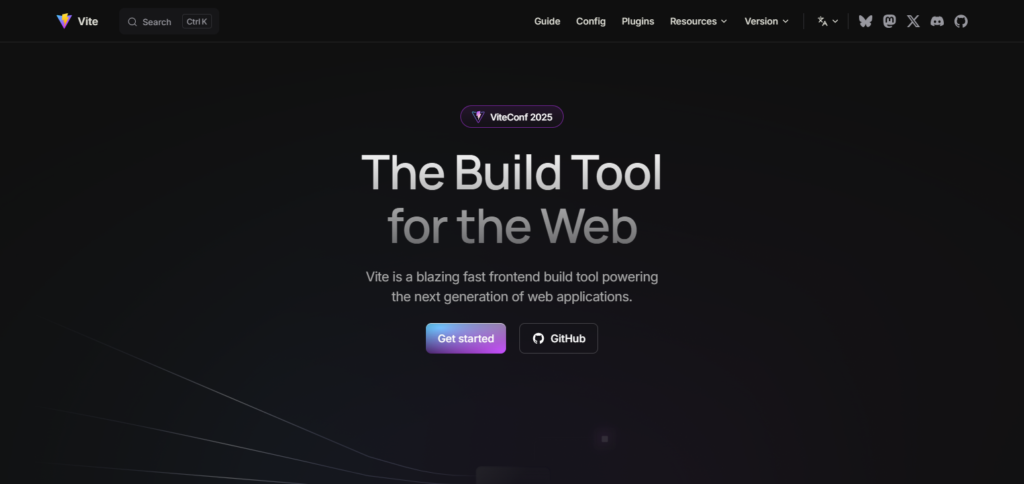
Its asynchronous architecture provides parallel transaction processing which improves scalability. Vite is optimally positioned for numerous blockchain-based applications, as it is capable of fluidly interconnecting numerous blockchains and supporting decentralized applications (dApps).
| Feature | Details |
|---|---|
| Technology | DAG-based ledger with Snapshot Chain for consensus |
| Transaction Speed | High throughput with instant transactions |
| Transaction Fees | Zero transaction fees |
| Energy Efficiency | Highly energy-efficient due to lightweight consensus mechanism |
| KYC Requirements | Minimal KYC required for wallet setup and transactions |
| Use Cases | Decentralized applications (dApps), tokenization, and micropayments |
| Governance | Community-driven governance through Vite ecosystem |
| Security | Robust security with asynchronous consensus mechanisms |
| Scalability | Unlimited scalability with increased network activity |
10.BlockDAG (BDAG)
BlockDAG (BDAG) is one of the best Directed Acyclic Graph (DAG) coins primarily because of its design that allows for scalability and low-cost transactions.
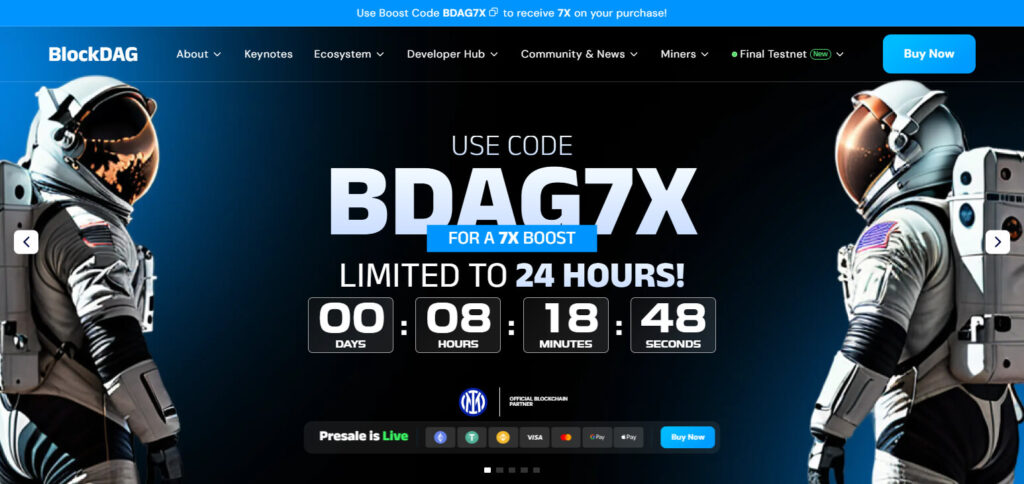
It enables parallel processing of transactions which guarantees faster confirmation and removal of bottlenecks within the network.
This approach enhances efficiency while maintaining decentralization. BDAG’s capacity to support secure, high- volume transactions makes it a powerful solution for decentralized applications and financial systems.
| Feature | Details |
|---|---|
| Technology | Hybrid DAG and Proof-of-Work (PoW) architecture |
| Transaction Speed | High throughput with scalable transaction processing |
| Transaction Fees | Low transaction fees |
| Energy Efficiency | Optimized for energy-efficient operations |
| KYC Requirements | Minimal KYC required for wallet setup and transactions |
| Use Cases | Decentralized applications (dApps), tokenization, and secure data transfer |
| Governance | Community-driven with decentralized governance |
| Security | Advanced cryptographic protections and fault-tolerant systems |
| Scalability | Supports high transaction volumes with parallel processing |
Conclusion
All in all, the best Directed Acyclic Graph (DAG) cum cryptoassets like Hedera, Kaspa, IOTA, (HBAR, KAS, MIOTA) etc. show overwhelming advantages in comparison with traditional blockchain systems, like faster transaction speeds, ease of scaling, and low transactional fees.
Each coin builds upon a certain problem in decentralized apps, the Internet of Things (IoT), and enterprise solutions through a separate consensus design and mechanism.
For now, these coins mark the prospecting innovations in the perpetually evolving DAG ecosystem for reliable and efficient networks required to reinvent the future of blockchain technology.



